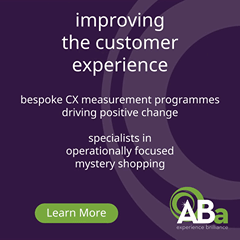When it comes to communication, only 46% of frontline workers in retail feel well informed
Effective communication elevates the employee experience by giving employees a sense of purpose within their daily responsibilities.
When employees feel like they have all the necessary tools, information, and resources to thrive both in and out of the workplace, holistically, they feel connected, included, and empowered to be their absolute best at work.
As we head further into 2022, now is the time to take a hard look at the day-to-day frontline communication experience if you hope to foster strong relationships and build trust with the people who are the enthusiastic faces of your brand and owners of your last mile.
When compared to complex workplace issues like burnout and equity, communication may seem straightforward but it’s far from simple. The COVID-19 pandemic highlighted just how critical internal and frontline communication can be as well as ongoing gaps in workers’ ability to keep pace with change.
In this year’s State of the Frontline Work Experience report, Axonify partnered with Arlington Research to ask frontline employees a critical question: how are you doing? The report found that 98% of employees received communication during the pandemic, the challenge therefore is not the lack of communication: it’s the quality.
Lots of communications doesn’t equal good communication.
Every employee needs timely, reliable, relevant information so they can make good decisions and do their best work. Digital collaboration tools—like email, intranets and virtual meetings are now commonplace which is great – 82.3% of frontline workers prefer digital methods regardless of age. However, too many retailers still rely on analogue methods like pre-shift meetings or staff notice boards. This doesn’t bode well with part time and shift workers. In the retail sector, the report shows that only 54.7% of staff feel well informed and only 46% of employees rated the communication as relevant.
Good communication can improve the work experience because a successful frontline is an information-empowered frontline.
Companies need to think about building strategies and investing in tools that enable right-fit communication methods for everyone on the frontline. Here’s how you can get started.
5 Top tips for improving frontline communications in 2022
- Make sure communication is two-way
Employees want to be heard. Look for digital tools that include options to post, respond and react to messages, even those sent to thousands of employees. Avoid the temptation to restrict functionality, and therefore conversation, because you’re afraid of what people might share. Establish clear ground rules, implement community management to hold people accountable and trust that employees know how to behave in the workplace. - Go digital
It’s time to finally retire the bulletin boards and shut down the secret WhatsApp groups. Instead, consider these strategies: Implement communication technology designed for busy, mobile frontline workers. Give everyone the opportunity to access the most up-to-date information regardless of role, location, manager or schedule. Enable channels that can be used for centralized messages, such as those from executives and department leaders, as well as decentralized communication within teams and locations. - Prioritise the stuff that’s actually important
Too much communication can be just as bad as no communication, overloading employees and making them prone to forgetting. Work with your communication influencers to set up guidelines for prioritizing frontline communication. Only push the information that people need to know ASAP and provide an easily searched digital knowledge base to cover the nice-to-know stuff. - Consider every access point
Point-of-sale systems. Handheld scanners. Breakroom kiosks. Let employees retrieve timely information updates on the digital access points that best align with their workflow and preferences. Implement a bring your own device (BYOD) policy so employees have the option to access information away from work. BYOD has proven especially helpful for part-time workers, during periods of accelerated change and to support employees during furloughs and shutdowns. - Turn communication into behaviour change through reinforcement
Making information easier to access is just the first step. Now, you must make sure they retain it and apply it on the job. Use reinforcement training, such as daily refreshers and question-based learning, to help employees retain need to-know information long term. Urge managers to reinforce key points during their group meetings and one-to-one coaching sessions.
The State of Frontline Work Experience 2021 is packed with data on how the frontline is actually feeling at work, plus lots of great advice on which levers you can pull to attract and retain the best talent—now and into the future. To get your copy of the Axonify report, click here.














